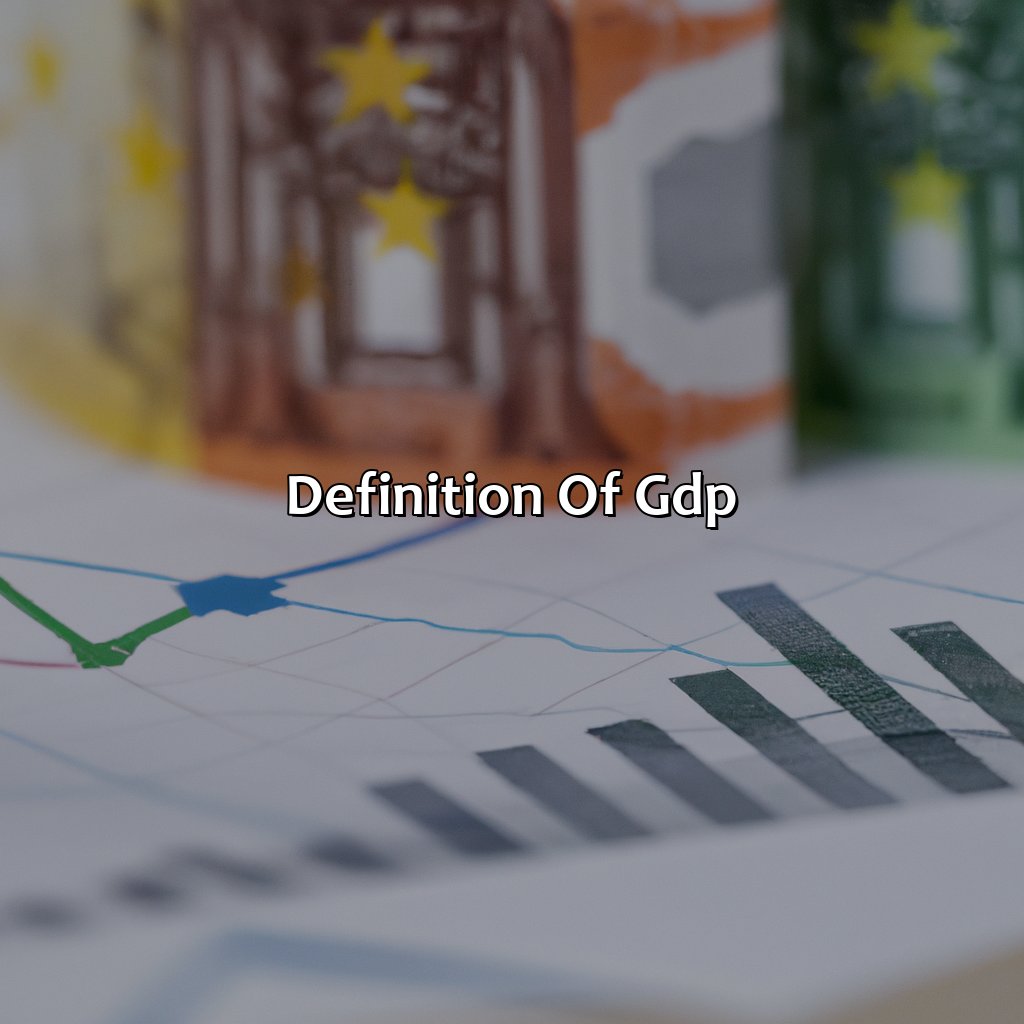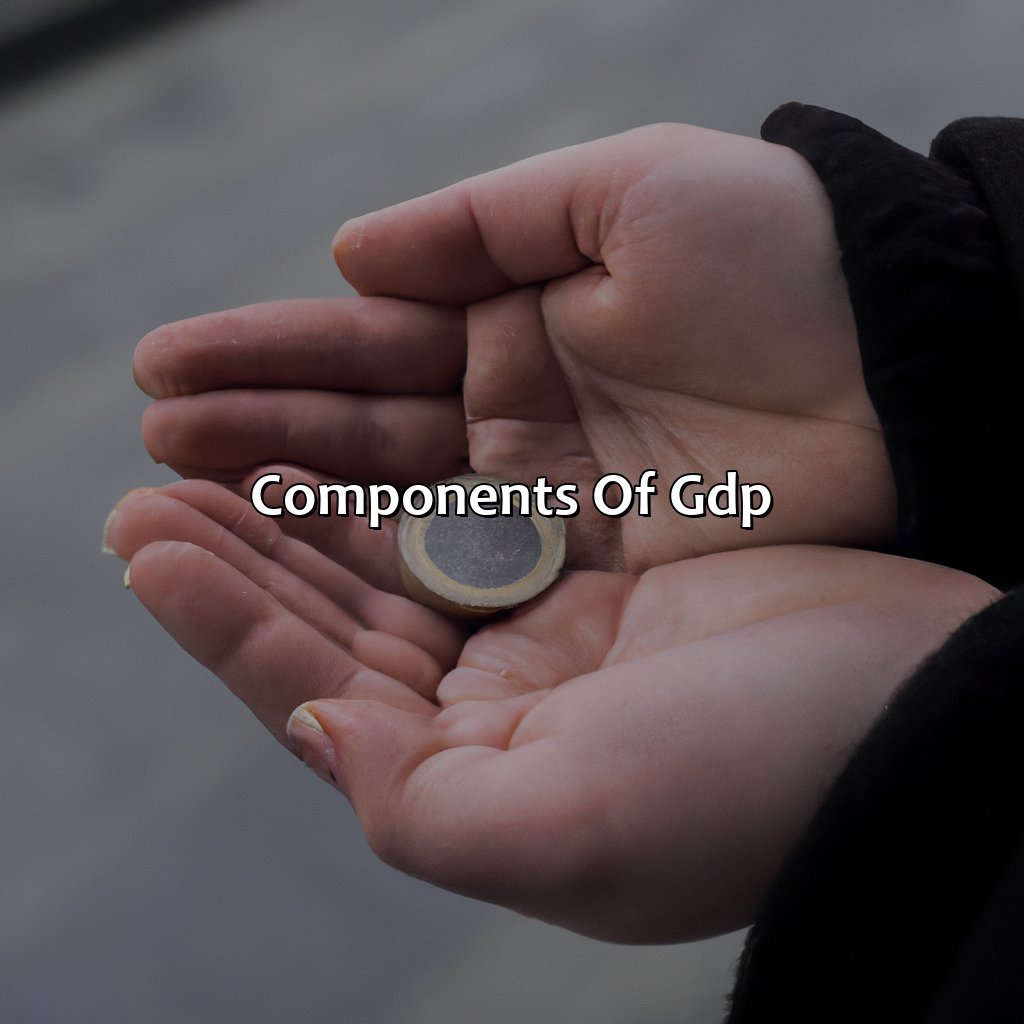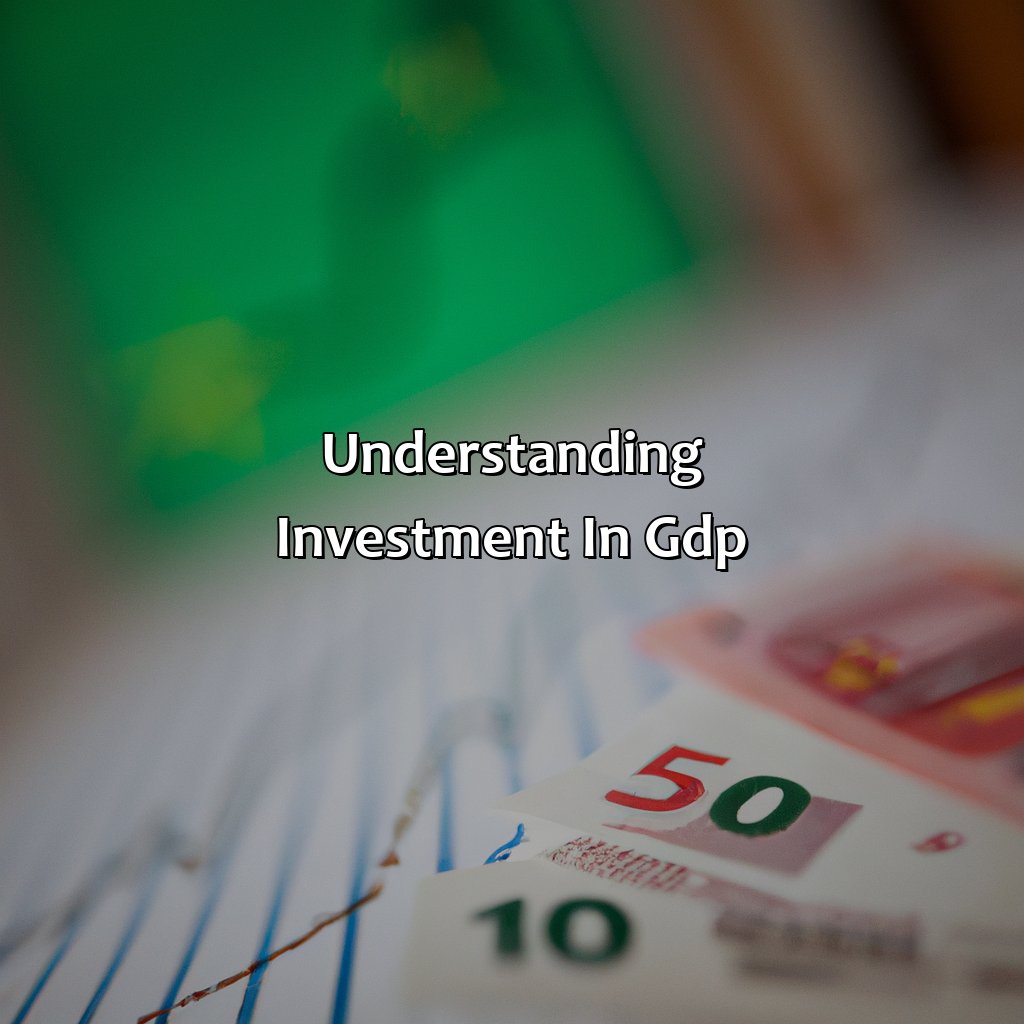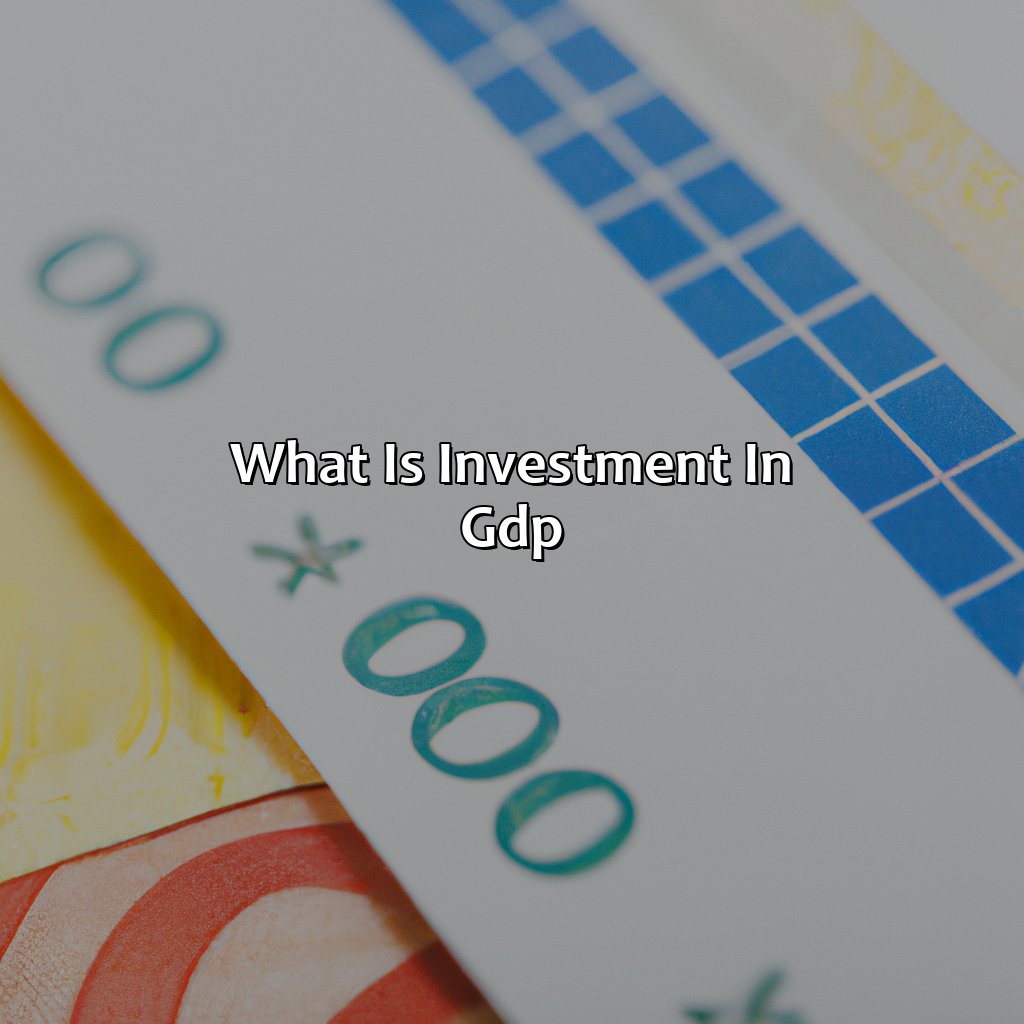What Is Investment In Gdp?
Key Takeaway:
- Investment is a crucial component of GDP: Investment includes spending on fixed assets such as machinery, equipment, and infrastructure. It is an indicator of economic growth as it signals that firms are expanding their operations and upgrading their technology.
- Investment is affected by factors like interest rates, business confidence, and government policy. Higher interest rates generally reduce investment as borrowing becomes more expensive. Government policies that incentivize investment can help boost economic growth.
- Investment in human capital is also important for economic growth: This includes spending on education and training, which can lead to a more skilled workforce and higher productivity. Countries that invest in their human capital tend to have higher GDP per capita.
Have you ever wondered what is the importance of investment in Gross Domestic Product (GDP)? This article provides a comprehensive overview of the role of investment in the growth of an economy and how it affects the national GDP. You’ll understand why investment is essential for any country’s economy.
Definition of GDP
Investment in GDP refers to the amount of money invested by businesses and governments in the production of goods and services within a country. This includes expenditures on capital goods, such as buildings and machinery, as well as inventory investments. Essentially, it measures the amount of money flowing into the economy to support economic growth.
A high level of investment in GDP can lead to increased economic activity, as businesses expand and new infrastructure is built. However, it is important to note that investment alone is not enough to drive economic growth. Other factors, such as consumer spending and government policies, also play a crucial role.
It is also worth considering the composition of investment in GDP. For example, a higher proportion of investment in research and development may lead to advances in technology and increased productivity, while an over-reliance on real estate investment may lead to economic instability.
To optimize investment in GDP, it is important for businesses and governments to focus on long-term planning and sustainable development. This might involve investing in education and training programs to improve skills and productivity, or adopting policies that incentivize environmentally friendly practices. By taking a broad approach to investment, it is possible to drive sustained economic growth and ensure a prosperous future for all.

Image credits: retiregenz.com by Adam Woodhock
Components of GDP
Understanding components of GDP? Focus on: consumption, government spending, net exports and investment. This will give a summary of how GDP of a nation is computed. And also what each component means.

Image credits: retiregenz.com by Joel Woodhock
Consumption
One of the vital components of GDP is the amount of money spent by households on goods and services known as ‘consumer spending.’ It encompasses expenses incurred by individuals for housing, food, healthcare, and other essential needs. In simpler terms, it is termed as household consumption.
When it comes to economic stability, consumer spending plays a critical role in driving growth rates. The higher the consumer spending, the better is the economic status of a country. Consumer confidence and income levels determine how much an individual spends on everyday needs.
An essential aspect of analyzing consumption patterns is keeping up with trends. It helps policymakers gauge people’s preferences and adapt policies accordingly. For example, offering tax incentives on purchasing eco-friendly products or efficient appliances boosts the sales revenues for such products while promoting sustainable development.
Looks like the government won’t be winning any awards for ‘Most Frugal’ anytime soon with their spending habits.
Government Spending
The portion of Gross Domestic Product (GDP) that represents expenses by the government is a critical component that helps in generating the national income. Apart from this, it also plays a significant role in determining the overall economic performance of a country. Government expenses comprise various subcategories like investments in infrastructure, defense, education and healthcare programs, which have an impact on the overall productivity and growth of a nation.
These investments provide funds for creating roads, bridges, airports and other public services that help private enterprises to conduct their businesses smoothly. In addition to this, government spending also encompasses repetitive budget reports and other administrative expenditures linked with running a country.
Lastly, it can be noted that higher levels of government expenditure would lead to increased demand for goods & services at both levels- macroeconomic as well as microeconomic. This will ultimately create opportunities for entrepreneurs to invest more and facilitate economic development.
Once upon a time during a financial crisis period when a certain government cut its expenses to balance the budget deficit, most residents were not happy with the decision as they had to compromise on some necessary social service schemes. The decrease of accessible public services created chaos among locals who then initiated protests leading to widespread political instability.
Why save for a rainy day when you can just export it somewhere sunny?
Net Exports
The category ‘Overseas Sales’ minus the ‘Foreign Purchases’ in a nation’s economy is known as the component of GDP – ‘Net Exports’. In this section, we will discuss what Net Exports are and their significance in calculating a country’s gross domestic product.
In this Table, we have included the formula to calculate Net Exports. We can see that it includes Overseas Sales and Foreign Purchases as its components. The data shows that if the value of exports is high compared to imports, the nations will have a positive Net Export meaning they produce more than they consume. However, If imports exceed exports, it results in a negative Net Export. Developed countries tend to maintain a positive net export with emerging nations while heavily relying on their manufacturing capacities.
As we notice from this section, counting only the physical items crossing borders does not account for all aspects involved in calculating a country’s net exports. Services abroad, foreign aid allocation and other financial activities also contribute to determining precise statistics regarding trade exchange between nations.
Pro Tip: It is useful to note that stable currency valuation affects import-export value leading politicians to manipulate their currencies when exporting goods or services abroad for better margins.
Why save for a rainy day when you can invest in GDP and make it rain every day?
Investment
Investment in GDP is measured using the investment component of the national accounts which factors in business fixed investments, residential investments and inventory investments. The final result determines the level of capital invested within a specific timeframe.
It’s important to note that while investment represents a smaller proportion of GDP than other components such as household consumption, it has significant implications for economic growth in the long run. Investment serves as a catalyst for new jobs creation by increasing productivity and promoting innovation.
In Japan during the 1990s, a period known as ‘The Lost Decade’, low levels of domestic investment contributed to economic stagnation. Japanese firms remained reluctant to invest despite favorable market conditions which limits potential economic output and overall growth.
Investment in GDP is like planting a seed in the economy, it may take time to grow but eventually it will bear fruit.
Understanding Investment in GDP
Delving into ‘What is Investment in GDP?’ – understand how investment contributes to GDP! This section has three sub-sections:
- Definition of Investment in GDP.
- Examples of Investment in GDP.
- Importance of Investment in GDP.
It provides a comprehensive view of the effect investment has on a nation’s GDP.

Image credits: retiregenz.com by Yuval Duncun
Definition of Investment in GDP
Investment in GDP refers to the portion of an economy’s gross domestic product that goes towards capital investments. This includes expenditures on goods and services that are designed to increase productivity, such as machinery, equipment, and facilities. Investment in GDP plays a crucial role in driving economic growth by increasing productive capacity and creating jobs.
As investment increases, businesses are able to expand operations and hire more workers, leading to higher levels of output and increased economic activity. It is important for governments and policymakers to encourage investment in GDP through policies that promote a favorable business environment, remove barriers to investment, and incentivize innovation.
Investment in GDP is considered a critical component of economic development. By investing in physical infrastructure like roads and bridges as well as human capital such as education and healthcare, economies can become more productive over time. This creates a virtuous cycle where increased investment leads to greater prosperity, job growth, and ultimately higher living standards for citizens.
For example, Japan’s “Abenomics” policy focused heavily on promoting investment in high-growth sectors like technology through tax reductions, subsidies for research and development (R&D), and regulatory reform. This helped drive record levels of foreign direct investment into the country while boosting local innovation capacity for Japanese firms.
Get ready for some numbers that will make your head spin, because these examples of investment in GDP will have you reaching for the aspirin.
Examples of Investment in GDP
Investment is a crucial component of GDP that comprises the sum of all expenditures spent by individuals, businesses and governments on capital assets. The investment in GDP can be categorised into three subparts: fixed investments, inventory investments, and human capital investments.
Below is a table demonstrating the different types of Investment in GDP along with their description and examples:
| Type of Investment | Description | Examples |
|---|---|---|
| Fixed Investments | Investment made towards long-term tangible assets like buildings, machinery, land etc. | Purchasing a factory, acquiring vehicles for business operations. |
| Inventory Investments | Investment made in goods intending to sell at a higher price or during scarcity. | A company storing high demand products |
| Human Capital Investments | Investment made to train and educate employees to enhance productivity. | [6] |
Without investment in GDP, the economy would be like a party with no snacks or drinks – boring and nobody would want to stick around.
- 6)Source:
- Chester Spatt. “The Value of Knowledgeable Employees: A Study of Worker Innovation at an Auto Parts Supplier.” Center for Financial Markets Working Paper Series (2012).
Importance of Investment in GDP
Investment plays a crucial role in shaping the Gross Domestic Product (GDP) of a country. Investment refers to spending on capital goods like factories, machinery, and research and development facilities that increase productivity. Higher investment leads to more output, employment, and income generation in the economy. Moreover, it also enhances an economy’s competitiveness by improving infrastructure, technology adoption, and innovation capacity. Consequently, higher investment accelerates economic growth and prosperity.
In the context of GDP calculation, investment represents the total value of all capital expenditures made by businesses or government entities in a given period. This includes investments in fixed assets such as factories, equipment, land improvements as well as changes in inventories & infrastructure spending.
It is interesting to note that investment can be influenced by macroeconomic factors like interest rates, availability of credit money supply & stability. One notable example is Japan where low-interest rates have encouraged companies to undertake more investments which are intended to reverse deflationary pressures.
To illustrate better; Between 2016-19 Greece’s GDP saw the biggest rise since joining the EU with 2% relying on Greece emerges from ‘decade-long’ financial crisis, driven largely by tourism and new foreign arrivals combined with an uptick private investment after protracted declines.
Five Facts About Investment in GDP:
- ✅ Investment in GDP refers to the sum of expenditures on fixed assets made by businesses, households, and government in a given period. (Source: Investopedia)
- ✅ Investment in GDP is a key indicator of economic growth and development, as it reflects the level of investment being made in the economy. (Source: The Balance)
- ✅ Investment in GDP can be broken down into three categories: business investment, residential investment, and government investment. (Source: Statista)
- ✅ High levels of investment in GDP can lead to job creation, increased productivity, and higher living standards for citizens. (Source: World Bank)
- ✅ Investment in GDP can also be influenced by factors such as interest rates, business confidence, and government policies. (Source: IMF)
FAQs about What Is Investment In Gdp?
What is investment in GDP?
Investment in GDP refers to the portion of GDP (Gross Domestic Product) that is attributed to investment. This includes spending on capital goods, such as equipment and machinery, as well as spending on new construction or improvements to existing structures.
Why is investment important for GDP?
Investment is important for GDP as it contributes to economic growth and development. It creates new jobs, boosts productivity, and increases the capacity for future production.
What are the different types of investment that contribute to GDP?
The different types of investment that contribute to GDP include business fixed investment, residential investment, and inventory investment.
How is investment calculated in GDP?
Investment in GDP is calculated by measuring the total expenditures on capital goods, new construction, and improvements to existing structures over a given time period. This is then added to other components of GDP, such as consumption, net exports, and government spending.
What is the relationship between investment and GDP growth?
Investment is positively correlated with GDP growth. When businesses and consumers invest more, it leads to increased production and economic activity, which in turn drives GDP growth.
What factors can affect investment and therefore impact GDP?
Factors that can affect investment and impact GDP include changes in interest rates, availability of credit, business confidence, consumer sentiment, and government policies regarding taxation and regulation.
